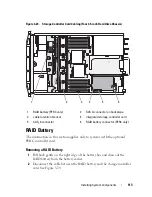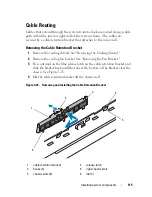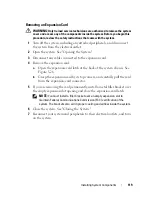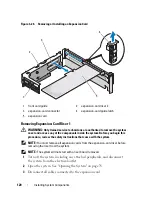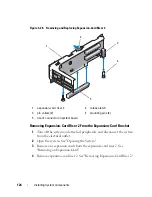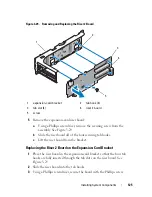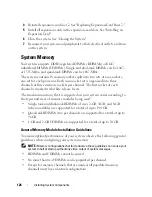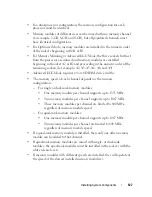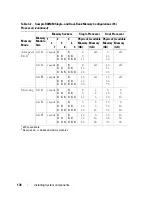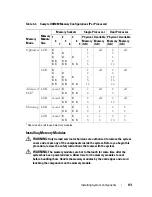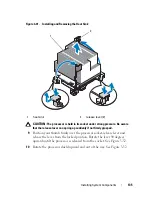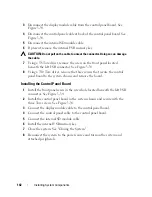
Installing System Components
127
•
In a dual-processor configuration, the memory configuration for each
processor must be identical.
•
Memory modules of different sizes can be mixed within a memory channel
(for example, 2-GB, 8-GB, and 4-GB), but all populated channels must
have identical configurations.
•
For Optimizer Mode, memory modules are installed in the numeric order
of the sockets beginning with A1 or B1.
•
For Memory Mirroring or Advanced ECC Mode, the three sockets furthest
from the processor are unused and memory modules are installed
beginning with socket A2 or B2 and proceeding in the numeric order of the
remaining sockets (for example, A2, A3, A5, A6, A8, and A9).
•
Advanced ECC Mode requires x4 or x8 DRAM device widths.
•
The memory speed of each channel depends on the memory
configuration:
–
For single or dual-rank memory modules:
•
One memory module per channel supports up to 1333 MHz.
•
Two memory modules per channel supports up to 1067 MHz.
•
Three memory modules per channel are limited to 800 MHz,
regardless of memory module speed.
–
For quad-rank memory modules:
•
One memory module per channel supports up to 1067 MHz.
•
Two memory modules per channel are limited to 800 MHz,
regardless of memory module speed.
•
If a quad-rank memory module is installed, then only one other memory
module can be added to that channel.
•
If quad-rank memory modules are mixed with single- or dual-rank
modules, the quad-rank modules must be installed in the sockets with the
white release levers.
•
If memory modules with different speeds are installed, they will operate at
the speed of the slowest installed memory module(s).
Summary of Contents for PowerVault NX3000
Page 1: ...Dell PowerVault NX3000 Systems Hardware Owner s Manual ...
Page 180: ...180 Jumpers and Connectors ...
Page 182: ...182 Getting Help ...
Page 192: ...192 Glossary ...
Page 200: ...200 Index ...

